
U-Z
UDO
A fine vegetable , eaten mainly in Japan. It needs a few years to establish (I only recently obtained it), and after this period, shoots are blanched during spring and eaten. The taste is apparently lemon-like, we’ll find out one day...
Udo (aralia cordata) seems easy to grow from shoots, but obtaining viable seeds has proved difficult for me, they need to be fresh and stratified.
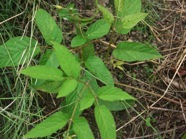
WASABI
There is a difference between wasabi (wasabia japonica) and horseradish, wasabi needs wetter conditions to grow well. Plants are easily propagated by replanting pieces of roots, I neer heard they produced seeds.
Wasabi has the same uses horseradish has, and the same pungent and for some people very strong taste. Wasabi is used quite a lot as an ingredient of the well-known sushi , originally eaten in Japan, but nowadays available all over the world.
VENUS’ COMB
Very small plants that are sometimes seen as a chervil alternative. The plants sow easily, are perfectly winter hardy (so they can be sown in autumn) and are perfect in just about every place, as long as it’s not overshaded too much.
Venus’comb (scandix pecten-veneris) is used in salads, or , if you have really much, in sauces, they can be added to lots of things. The taste is chervil-like, but not very strong. The seedheads are a wonderful sight as well.

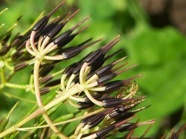
VICIA PISIFORMIS
I think the real name is pea vetch, but I’m not sure. Vicia has other interesting plants (I will update these as well), first this one: a wonderful plant, very attractive for bees, and it fixes nitrogen in the soil, and it gives a nice crop of edible , though small sort of peas. These need to be cooked thoroughly!
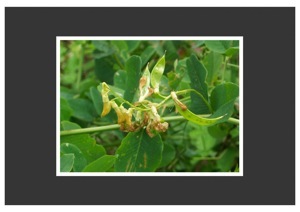
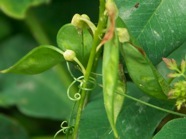

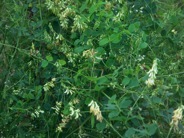
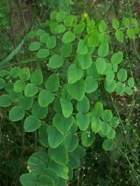
WATER CRESS
WATER PEPPER
Another Japanese ingredient of sushi, water pepper has a hot taste, the leaves are used raw for adding a strong flavour to salads,...I never used them in hot dishes, but I think this can be done.
Waterpepper (polygonum hydro-piper) has two versions: a green one, a wild plant in parts of Belgium, and a red one, this last one is the one that’s used in Japan. There are at least two varieties of this red one, but I suspect there are more..
It’s an easy plant to grow, but it could become weedy if you’re not careful, certainly on a wetter spot. Saw the fresh seeds preferably during the autumn, the seeds are short-lived. You will see the familiar red seedlings the next spring. Pick the leaves whenever you need them, be careful , don’t eat too much of them, this is no good.
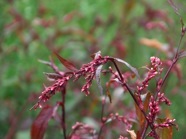
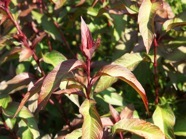
WATERMELON
You’re missing out something if you have only tasted the shop-bought watermelons, these are indeed water-melons, lots of water but no melon...
Some home-grown varieties are so much better, even in Belgium. They grow best in a greenhouse though, and don’t expect a very high crop. My favourite is , by far, a recently developed one, blacktail mountain, early ripening, easy-growing and really sweet and tasty, and indeed , juicy (and small if you compare it to the shop giants).
There are lots and lots of varieties, some are very funny (moon and stars), some have unfamiliar green flesh,....
WAX GOURD
I never managed to grow a decent wax gourd over here, probably because I was so stubborn that I had to try it outside...
These wax gourds (benincas hispida) are grown and used a lot inChina, Thailand,.. , where they are added to stir-fries, curries,..
They do require lots of warmth to grow out, I suspect it can be grown in a greenhouse over here....and again there are lots and lots of varieties...
WHEAT
The old wheat varieties ought to be on some ‘red list’, most of them are only maintained by genebanks, or even not maintained at all! This is sad, because they are so much more resistant to diseases, they have a better taste, they are nicer for breads,....
Most of these wheats are sown before winter, and give a harvest the next summer. Some of them grow quite tall, up to 2 metres (sometimes they do fall over...), and are easily harvested and treshed...
I will discuss this later, including some of the hundreds of varieties that are threatened.
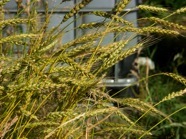

WILD ARAGULA
This is the more interesting version of aragula, if you ask me. It’s perennial, produces during summer and winter, and is as easy to grow as ‘true’ aragula. I don’t know if some varieties are selected directly from this wild aragula (diplotaxis tenuifolia), but ther seems to be a wild form with smaller and one with broader leaves...
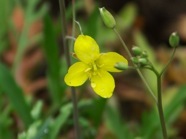

YACON
See: yacon